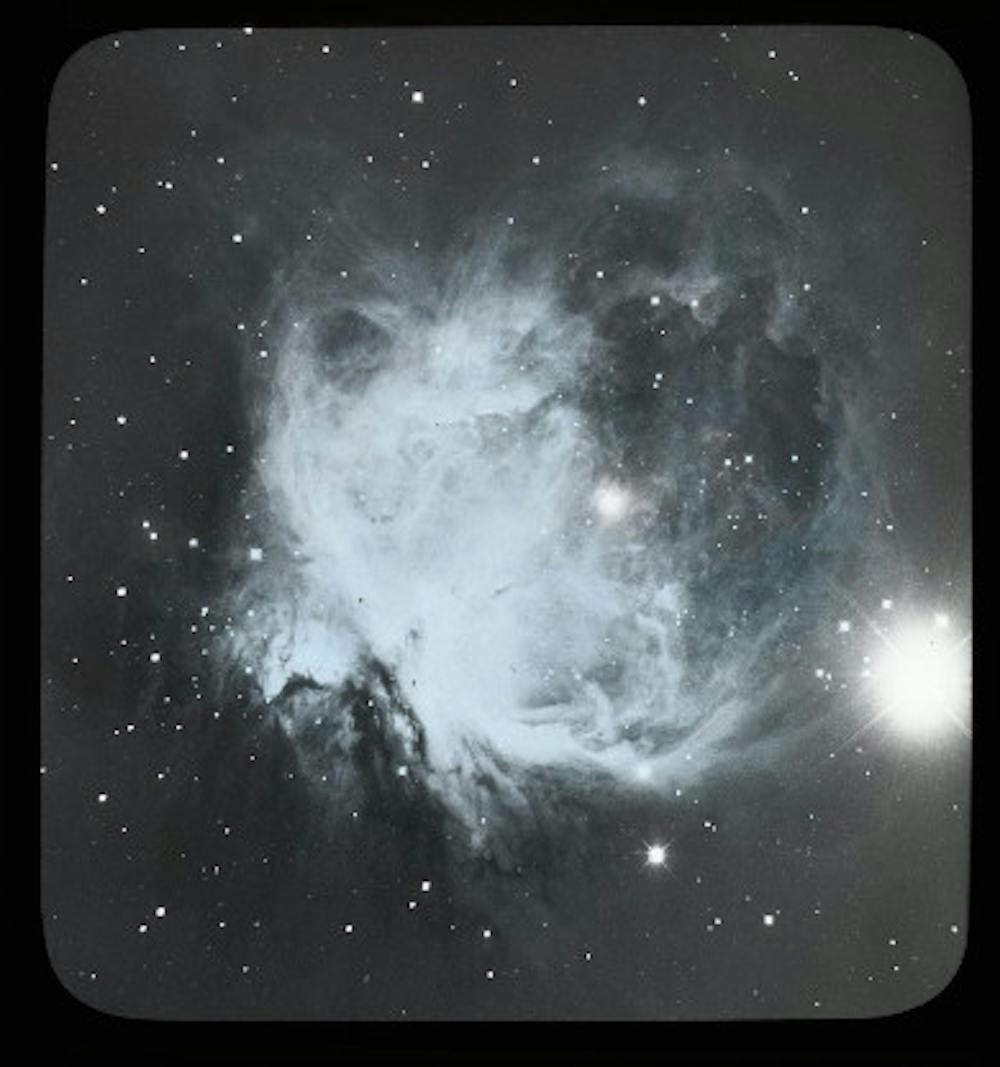‘Awe’ is an emotion many of us have felt throughout our lives, but one that has eluded a singular definition throughout its history. This concept has fascinated researchers since the 18th century, and has more recently undergirded Middlebury’s newest art exhibit: “An Invitation to Awe”, a project developed by Associate Professor of History of Art and Architecture Katy Smith Abbott. Smith Abbott originally intended for the exhibit to premiere in the fall of 2020, however, the effects of Covid-19 delayed its debut until the fall of this year. On the evening of Sept. 13, Smith Abbott presented her opening speech for the exhibit to a crowd of over 150 eager attendees.
Smith Abbott was not the only one to have played a part in the making of this exhibition. In her speech, she thanked a number of fellow professors, colleagues and students who took part in one of Smith Abott’s courses on awe that contributed to “An Invitation to Awe”. Through a collaborative effort of research and curation, they helped create a final product which now not only serves as a testament to their excellent work but also to the sense of community that was built throughout the process. .
“We had lots of time to connect with a bunch of different collaborators,” stated Maddy Russell ’26, one of the student contributors, in an interview with The Campus. “It's almost like a little family. You can spend your whole life trying to find something like that- your whole academic career trying to find a course that speaks to such [a] purpose … This is exactly what Middlebury was made for.”
On the exhibit’s opening night, the Museum of Art was abuzz with curiosity as attendees explored all that the exhibit had to offer. The pieces vary in form, ranging from visual works of art to auditory experiences and physical sensations, tapping into the sensory ways our bodies experience the complex emotion of awe. There are places where museum-goers can sit down and enjoy a segment of a podcast discussing awe, listen to sounds generated by a sculpture of metal rods and experience the beauty of Vermont’s natural landscape from a virtual reality headset. The exhibit also houses pieces that highlight the negative aspects of awe, like feelings of hopelessness, dread and devastation, challenging our typically positive or affirming perceptions of the feeling . These “negative” depictions of awe include the first-ever physical print of a human flatline, a panoramic photo of thousands of life vests from immigrants who fled by boat to Greece and a seemingly larger-than-life patch from an AIDS Memorial Quilt in remembrance of the millions of lives lost to the crisis.
“On a college campus with a ‘go-go-go’ mentality, taking time for awe is [a] practice that can help us slow down and appreciate the intricacies and delights that occur when moving through the world” shared Mary Nagy-Benson ’24.5, another of the student contributors, in an interview with The Campus.
Perhaps one of the most touching parts of the exhibit is at the very end. Walking through the exit doors one is greeted with the opportunity to share a personal experience of awe within the college community by writing that memory down on a slip of paper and hanging it next to the experiences of others. By the end of the exhibit’s opening night, many had already contributed. A poem, a key change in a song, seeing the solar eclipse back in April, an unexpected plot twist in a book and even just something as simple as seeing loved ones in any context all featured in the display.
“I hope everyone who comes to the exhibit leaves with an invitation to … go through life with awe-colored glasses as a lens to see and not shy away from the gifts, terrors, hardships and beauties of the world!” said Nagy-Benson.
The exhibit also showcases the various ways in which awe is experienced in people’s lives through the careful categorization and organization of the selected pieces. The awe of the natural world, awe through acts of humanity, and awe that is sacred or religious. This is how “An Invitation to Awe” invites its audience to consider the exhibit’s core questions of “where and how is awe most prolifically experienced?” Where and how do we find awe in our lives? What do we consider to be moments of awe?
“An Invitation to Awe” will remain at the Museum of Art for the duration of the fall semester, closing on December 8th, 2024.




